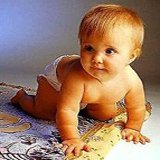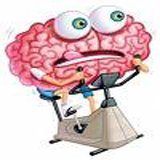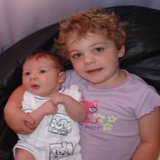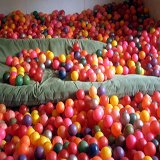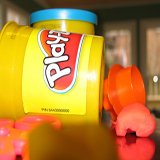Developing Fundamental Movement Skills
Fundamental Movement Skills are patterns of movement that involve different body parts such as the legs, arms, trunk and head. FMS include skills such as running, hopping, catching, throwing, striking and balancing.
Fundamental Movement Skills are the foundation movements or basic movement patterns to more specialized, complex skills used to play kid games, sports, dance, gymnastics, outdoor education and physical recreation toddler activities.
During the period from 15 month old to 3 years, the child development, physical capabilities progress from being able to toddle around unsteadily on his feet having only recently taken his baby first steps into confident mastery of a broad range of complex child development physical skills, such as throwing, catching, running, balancing and kicking.
Of course, his fundamental movement skills continue to develop in subsequent years but it is during this stages of fundamental movement skills development that these advanced physical abilities begin to show.
Fundamental Movement Skills
Foundation for Change
The foundation for your growing childs better control over his arms, legs, body, balance and hand eye coordination stems from three sources:
- The seeds of these abilities have been sown in the previous 15 months, as your babys hand eye coordination steadily improved from his original random arm and leg movements at birth into purposeful actions.
- The stimulation you gave your baby as he steadily gained mastery over basic baby movements like rolling from the tummy onto his back and vice versa, using his arms and legs to do some baby crawling from one side of the room to the other, and eventually standing independently without support. He continues to need your encouragement in order to maintain his progress with hand eye coordination skills.
- Some detail on the physical development of infants that takes place:
- Height and weight.
- Brain.
- Superior Vision.
By around the age of 2 years, your child has probably attained half the height that he will be as an adult, and his weight has also increased.
His legs are longer and his muscles are stronger and firmer, enabling him to move in a more agile manner, at a greater speed, and with more purposeful baby movements.
At birth, your childs brain has approximately 25 percent of its eventual adult weight, while at the age of 2 years his brain has grown to approximately 75 percent of its full adult weight.
This increased brain size is accompanied by maturation in part of the lower brain (called the cerebellum), giving him more control over his balance and posture.
By doing proper brain gym exercises, baby brain development can be stimulated optimally.
Another effect of the brain maturation that occurs in your childs second and third years is that his vision improves and he is able to focus his sight more accurately.
To effectively tackle the fundamental movement skills and challenges such as climbing, running, throwing and balancing, your child must be able to use his vision continually to scan the area in front of him.
He is much better able to do this by the time he is three years of age.
Clumsy Children
There is huge variation in the rate at which children acquire hand eye coordination skills. You need only to watch a group of 2- or 3 year olds to see that some are more agile than others.
So there is no need to worry if your child is always the one who seems to trip most over his own feet or who is last to manoeuvre himself onto the first step of the climbing frame.
Remember:
Individual differences in the development of fundamental movement skills are perfectly normal.
Statistics reveal, however, that between five and seven percent of young children suffer from clumsy child syndrome. In other words, they have difficulty with normal early childhood activities involving arm, leg and body movements.
Other toddler activities involving balance and coordination proves to be an overwhelming challenge for clumsy children. The ratio of clumsy boys to clumsy girls is about 2:1.
The dividing line between a child who is slow to acquire new coordination abilities and a child who is clumsy is unclear.
The lack of a clear definition doesnt really matter because every child clumsy, average or agile requires stimulation and encouragement to improve their fundamental movement skills.
Bear in mind that the root of clumsiness lies in the way the child perceives the world and in the way he is able to coordinate a number of processes it is not due to any physical problem with his arms or legs.
The biggest hurdle facing clumsy people and in fact a child who struggles with a physical challenge is that he may strengthen a low self confidence feeling in himself and may start to give up to easily when it comes to early childhood activities.
A child with poor hand eye coordination often expects to fail and so doesnt try hard. He needs your support to overcome the difficulties he experiences so that he can be building self confidence and continue to enjoy healthy physical games kids can play.
Safety
Now that your child is able to tackle a wider range of physical early childhood activities either inside the home or outside, perhaps in the garden or in a park or playground safety must remain a priority.
As the hand eye coordination challenges he wants to tackle become more complex, the potential hazards he faces also begin to increase.
Aside from the obvious safeguard of keeping an eye on your roaming child, carefully check all outdoor equipment.
Buy climbing frames, slides and swings only from reputable toy suppliers, and make sure that the equipment is firmly assembled according to the manufacturers instructions.
Apply the same safety criteria to play apparatus in playgrounds and parks. Look at the equipment for potential hazards before you let your child play on it if you are in any doubt, take him elsewhere to play.
Expert Advice
Looking for more questions and answers about fundamental movement skills in children?
Also be sure to visit all the fundamental movement skills pages for different ages.
Find It!
Can't remember where you read something specific? Just type in your search term in the box below and your specific topic will be returned to you instantly.





